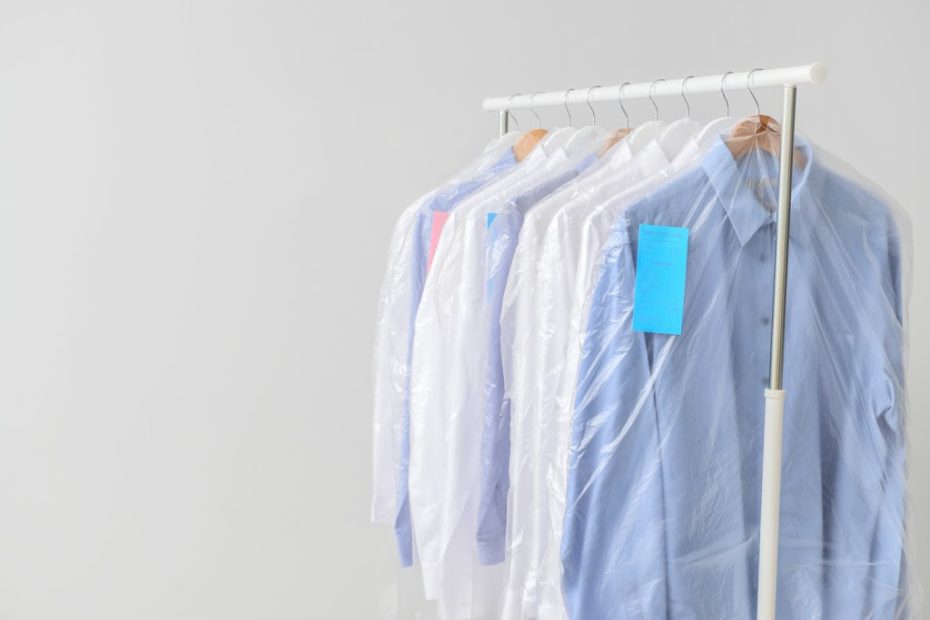Anyone familiar with the television show The Jeffersons knew the main character owned a dry cleaning business. It was his way of moving up and out of his low-income neighborhood in Harlem.
To dry clean clothing and items doesn’t mean, no fluids. The opposite is true. But when it comes to taking your personal belongings to the dry cleaners use caution.
Some items need dry cleaning, but others don’t.
If you’re unsure about which clothing or bedding items need the professional care of the cleaners, it’s okay. Follow along as we discuss what you can and can’t dry clean.
What Is Dry Cleaning?
Dry cleaning is the washing of delicate fabrics with other solvents than water (the most abundant solvent on the planet). Water may damage fabrics like silk, leather, and wool, so dry cleaning helps preserve the quality, according to Live Science.
History of Dry Cleaning
Dry cleaning dates back to 79 when fullers would cleanse clothing with ammonia made from urine, lye, and clay known as fullers earth. The mixture of these items removed stains well.
The first modern dry cleaner was Thomas Jennings, a free African-American and the first to receive a U.S. patent in 1821 to dry clean clothing through “dry sourcing.” His tailoring and dry cleaning business thrived in New York City.
Unfortunately, the flammable petroleum-based chemicals used in the process caused significant risk for fire.
A handful of solvents are used today and all have a much lower risk of catching fire.
What Can You Dry Clean?
Before tossing that sweater or jacket into the washing machine, read the label. While checking out the label during shopping is best, if you missed this step pre-check-out, it’s okay.
But reading the label saves you the frustration of ruining that new dress or comforter.
If the label suggests machine washing, then you’re in the clear. When the words dry clean only appear, it’s wise to abide by this suggestion.
Machine washing items meant for dry cleaning could severely damage the material and appearance. People learn the hard way to not machine wash cashmere in hot water.
Taking your clothing to the dry cleaners can save you time in your busy schedule and reduce the risk of damaging the fabric.
Fabrics that need dry cleaning include:
- Silk
- Velvet
- Suede
- Leather
- Rayon
- Wool
Silk
When people mention the word silk, it creates thoughts of prosperity and luxury. Silk is delicate and should be dry cleaned. When selecting a dry cleaner, learn if they have experience with dry cleaning silk items. You don’t want your treasure silk blouse ruined by inexperience.
Velvet and Suede
Velvet and suede feel nice but need dry cleaning if dirty. Pure velvet is made of acetate and viscose. It should get dry cleaned to keep the material looking and feeling beautiful.
Suede material feels pleasant to the touch. There’s nothing better than a comfortable pair of suede shoes. Unfortunately, suede stains easily even from water, so dry cleaning is the best option for removing dirt.
Leather
Leather deserves dry cleaning treatment (although it does require a special cycle). The water darkens and damages the fabric, according to How to Clean Stuff. It’s not ideal to wear a leather coat during inclement weather unless you want the rain or snow to change the appearance.
Wool
Wool can shrink in the dryer and usually comes with a dry clean only label. To lessen the risk of damage, take your wool items to the cleaners.
Rayon
Rayon is a semisynthetic material. Dyed rayon could bleed, lose its shape, and shrink during machine washing.
What Shouldn’t You Dry Clean?
Thank goodness, not all clothing requires the dry cleaning process.
But it’s crucial to pay attention to the garment material and the label suggestions. Certain fabrics like cotton, nylon, polyester, spandex, acrylic, and acetate don’t need dry cleaning. Durable materials can withstand the exposure to water, detergents, and a dryer machine.
If you’re unsure as to whether a sweater, t-shirt, or slacks should get the rinse cycle check the tags. After learning if machine washing is okay, then select the right water temperature and detergent.
When in doubt, lay an item flat or hang dry to avoid shrinkage or fading.
Dry Cleaning Grey Area
Some items with dry clean labels can be hand washed. Cashmere falls into this category because handwashing can soften the material over time.
If you decide to handwash cashmere use a mild detergent and press out the water. Don’t wring the fabric and lie flat to dry for several days. Wools and cashmeres are susceptible to damage when wet.
Washing silk at home is possible, but it takes patience and care.
Use lukewarm water to wash and cool to rinse. Adding a water softener may improve the quality of the cleaning. White vinegar could preserve the color of the silk. But don’t soak the items for too long. Rinse thoroughly and roll in a towel to remove water. Then hang away from direct sunlight and heat to dry.
Velvet and polyester blends are safe for machine washing in lukewarm water to avoid shrinking.
If you’re still unsure, contact a dry cleaner to ask questions about whether to wash or dry clean.
Decide For Yourself
The decision of whether to dry clean or machine wash is up to you.
Read the labels and use your best judgment. If handwashing can remove a stain without ruining a garment, then do it. But if you want the security of knowing professionals cleaned your clothing go for dry cleaning.
For more information on whether dry cleaning or machine washing is right, please read our blog.
Explore Our Dry Cleaning Services
Learn more about the dry cleaning services we offer at Janet Davis Cleaners!

